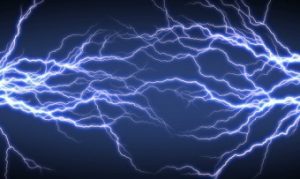
Demand for home technology is growing, and homeowners might start with a trial DIY security experience. After challenging setup and maintenance, they’ll reach out to a security dealer, seeking service, support and expertise. Security system installers must consider all the factors impacting success of a system to provide a more comprehensive value to clients, and many are expanding their knowledge base in supportive technologies like networking, for example.
Dealers can also gain from educating themselves about power protection — just as an unstable network can put devices offline, unstable power conditions from the source could adversely affect a security system’s performance and longevity. Whether a dealer or end-user, power is often considered a stable force. When something malfunctions, it’s usually assumed to be a fault of the device itself. But power spikes, sags and small surges that occur on a daily basis could be the cause of instability or device downtime; it’s a myth that lightning is the only threat to systems.
Power issues are growing, especially as homes with many large appliances and TVs, take on additional power draws like security cameras, sound systems, etc. These issues can be hard to detect, but could be noticed, for example in a TV room: When a mini fridge cycles on when an air conditioner is also running, you may notice that the lights flicker or dim. That flickering is evidence of a surge, where the power is struggling to support all of the devices in the room, and thus, devices aren’t getting a strong and constant stream of power.
These fluctuations are damaging to equipment, as well as other issues such as electromagnetic and radio frequency interference, over/under voltage, ICE–inrush current, etc. that are also often present. Over time, they can damage equipment or lessen its lifespan.
Installations with power issues often need continual support because of a tricky piece of equipment that goes offline or mysteriously breaks down. But it’s possible that the problem stemmed from the power instead of a device malfunction in and of itself. As a first step to an installation, security dealers should first investigate the power conditions of the home. There are diagnostic tools — such the SurgeX enVision — that installers can deploy to “check the home’s foundation” and identify power problems that could affect the system. Without doing so, they risk system damage and a stunted lifespan, as well as potential damage to the client relationship.
A security panel could repeatedly need on-site service because it keeps going offline even though the other connected devices are functioning properly. Repeated truck rolls are costly for the dealer, and aggravating for the client to make arrangements for multiple visits when they expect the system to just work. To prevent these issues, dealers can proactively secure the quality of power at the installation site. Just as you wouldn’t build a security system on top of a poor home network, security of the home’s power is also required.
The next step is protection, with surge elimination and power conditioning equipment that can prevent these issues from reaching the system. Dealers should look for a few specs in this equipment, such as: Advanced Series Mode surge elimination technology, catastrophic over/under voltage shutdown, inrush current elimination, and EMI/RFI noise filtration. These features cover all of the bases to keep systems running on clean power to prevent device degradation and downtime.
The combination of power analytics can show homeowners the need for power protection if the conditions in their home are poor and can negatively impact their investment in an installation, and dealers should look for products that combine conditioning and surge elimination.
As another layer, dealers can choose to offer power monitoring and management; for example, the SurgeX Axess Elite includes the power conditioning and elimination, but also gives dealers information about the system with reports of energy usage as well as logs of temperature, voltage measurements, temperature and current draw measurements, as well as the ability to control the system remotely. Approaching security system protection from power problems and anomalies starts with knowledge and diagnosis. With power conditions stabilized, dealers can confidently proceed with an installation knowing that their work won’t be compromised by common power issues. With the proper knowledge and plan in place, security dealers can position themselves as a trustworthy partner for clients to advance the home’s technology and protect it.











